 by our College Data Analytics Team
by our College Data Analytics TeamUNH total enrollment is approximately 14,348 students. 11,382 are undergraduates and 1,485 are graduate students.
Male/Female Breakdown of Undergraduates
The full-time UNH undergraduate population is made up of 56% women, and 44% men.
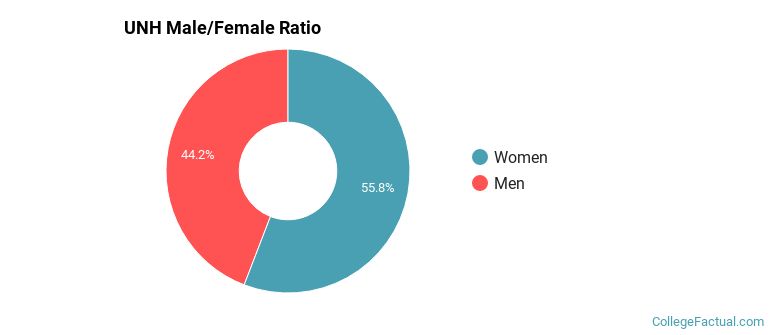
For the gender breakdown for all students, go here.
UNH Racial/Ethnic Breakdown of Undergraduates

| Race/Ethnicity | Number |
|---|---|
| White | 9,514 |
| Unknown | 478 |
| Hispanic | 400 |
| Asian | 337 |
| International | 270 |
| Multi-Ethnic | 250 |
| Black or African American | 120 |
| Native Hawaiian or Pacific Islander | 1 |
See racial/ethnic breakdown for all students.
Male/Female Breakdown of Graduate Students
About 60% of full-time grad students are women, and 40% men.
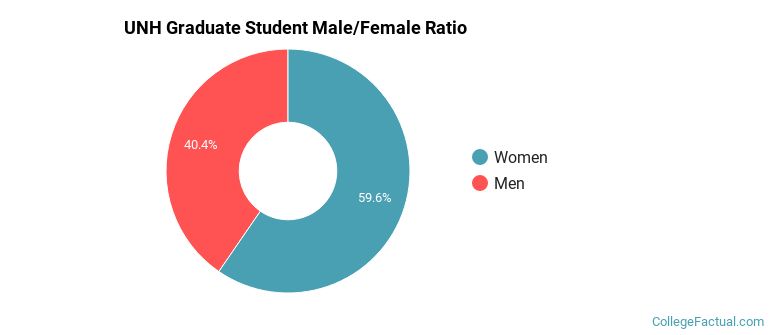
For the gender breakdown for all students, go here.
UNH Racial-Ethnic Breakdown of Graduate Students
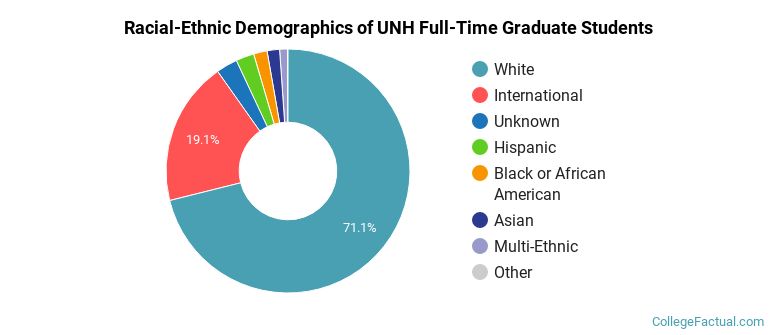
| Race/Ethnicity | Number |
|---|---|
| White | 1,063 |
| International | 271 |
| Unknown | 43 |
| Black or African American | 30 |
| Hispanic | 29 |
| Asian | 27 |
| Multi-Ethnic | 22 |
| Native Hawaiian or Pacific Islander | 0 |
See racial/ethnic breakdown for all students.

| Race/Ethnicity | Number |
|---|---|
| White | 11,690 |
| Unknown | 671 |
| International | 621 |
| Hispanic | 482 |
| Asian | 400 |
| Multi-Ethnic | 292 |
| Black or African American | 177 |
| Native Hawaiian or Pacific Islander | 2 |

There are approximately 8,081 female students and 6,267 male students at UNH.
UNH ranks 466 out of 2,183 when it comes to geographic diversity.
58.13% of UNH students come from out of state, and 1.08% come from out of the country.

The undergraduate student body is split among 30 states (may include Washington D.C.). Click on the map for more detail.
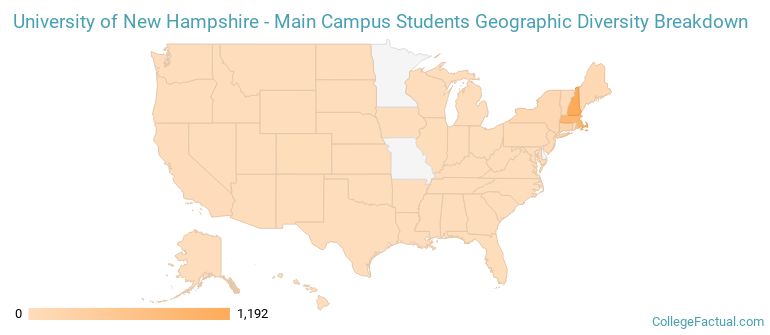
| State | Amount |
|---|---|
| New Hampshire | 1,192 |
| Massachusetts | 906 |
| Connecticut | 234 |
| New York | 118 |
| Maine | 95 |
Students from 81 countries are represented at this school, with the majority of the international students coming from China, India, and Iran.
Learn more about international students at UNH.
A traditional college student is defined as being between the ages of 18-21. At UNH, 74.65% of students fall into that category, compared to the national average of 60%.
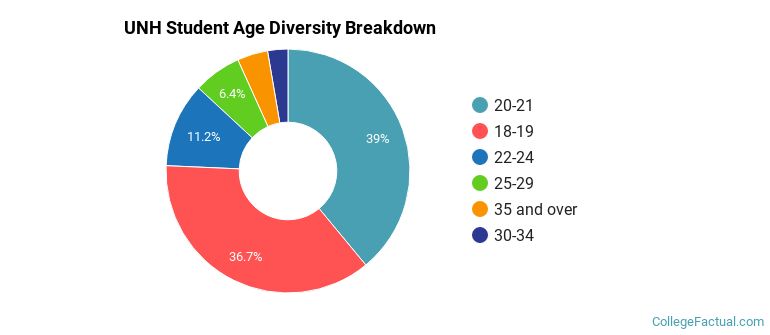
| Student Age Group | Amount |
|---|---|
| 20-21 | 5,908 |
| 18-19 | 5,560 |
| 22-24 | 1,698 |
| 25-29 | 963 |
| 35 and over | 614 |
| 30-34 | 408 |
| Under 18 | 0 |
Footnotes
*The racial-ethnic minorities count is calculated by taking the total number of students and subtracting white students, international students, and students whose race/ethnicity was unknown. This number is then divided by the total number of students at the school to obtain the racial-ethnic minorities percentage.
References
Department of Homeland Security Citizenship and Immigration Services
Learn more about how College Factual creates their Diversity Rankings.